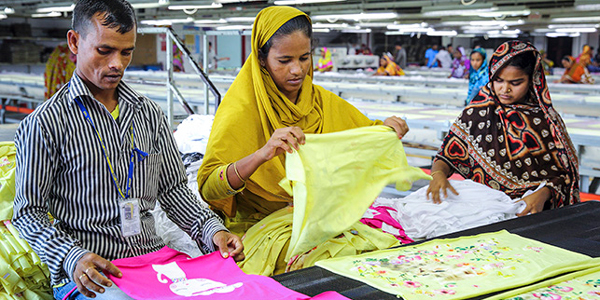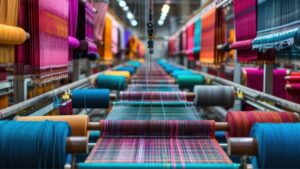 Several companies, seeking to show good faith and concern for the welfare of the employees working in their garment factories, have made it a point to bring forth their standpoint of a “fair” living wage.
Several companies, seeking to show good faith and concern for the welfare of the employees working in their garment factories, have made it a point to bring forth their standpoint of a “fair” living wage.
While a lot of concerned welfare organisations have also brought up this issue, mobilising the workers to make their demands known to the government and the companies their factories work for.
Recently, over 200 garment workers in Bangladesh took to the streets of the country’s capital Dhaka, urging the government to double the monthly minimum wage. The current minimum wage is “disproportionate” with the soaring cost of living, they claimed. They called on the government to form a wage board to oversee wage raises and other benefits and threatened tougher action if their demands are not met by May 1, International Labor Day.
Around three months ago, a forum of readymade garment (RMG) workers at a recent event organised by the Garment Workers Front in Dhaka, urged the government to raise Tk 15,000 as the minimum wage for RMG workers.
Also Read – Bangladesh RMG workers demand Tk 15,000 as minimum wage
So what is living wage?
According to Sabita Banerji of Ethical Trading Initiative, “Fair wage, decent wage, living wage… it doesn’t matter what you call it, it’s about paying workers enough so that they can cover the basic costs required for a dignified, healthy life.”
Ethical Trading Initiative has taken up several living initiatives, including ACT (Action, Collaboration, Transformation) initiative on living wages and ActionAid initiative for its work on Corporate Accountability.
Fair Wear Foundation (FWF) had launched a second-generation wage ladder tool that will allow garment factory wages to be compared against a range of payment benchmarks, such as wages between men and women and between different factory departments, both on a country and region level.
Also Read – Fair Wear Foundation launches wage tool update
A few months ago, Swedish fashion giant Hennes & Mauritz (H&M) unveiled its plans to ensure that workers making its clothing are paid wages that cover their cost of living. The largest, buyer of ‘Made in Bangladesh’ label will next year start assessing the gap between the cost of living and their wages in factories of Bangladesh and Cambodia.
Within the next five years, 750 of its most important suppliers, covering 60 per cent of its goods, would be capable of paying a fair living wage.
According to Helena Helmersson, Global Head of Sustainability, H&M, “H&M is working closely with two factories in Bangladesh and one in Cambodia to poll workers and managers about the cost of their basic needs. As a result of this research, the company will determine how much wages needs to be adjusted.”
Continuing its strategy to implement the Fair Wage Method, developed by the independent Fair Wage Network, H&M is trying to cover more number of factories every year. It covered 68 during 2015 and an additional 78 during 2016. At the end of this year, supplier factories in Bangladesh, Cambodia, Indonesia, India, China and Turkey will be covered. This would help in improving the dialogue between the employers and the factory employees, the company feels.
Besides, several other American and European companies are also gradually moving towards the same goal of a more sustainable form of doing business in countries that are the major hubs of garment manufacturing.






